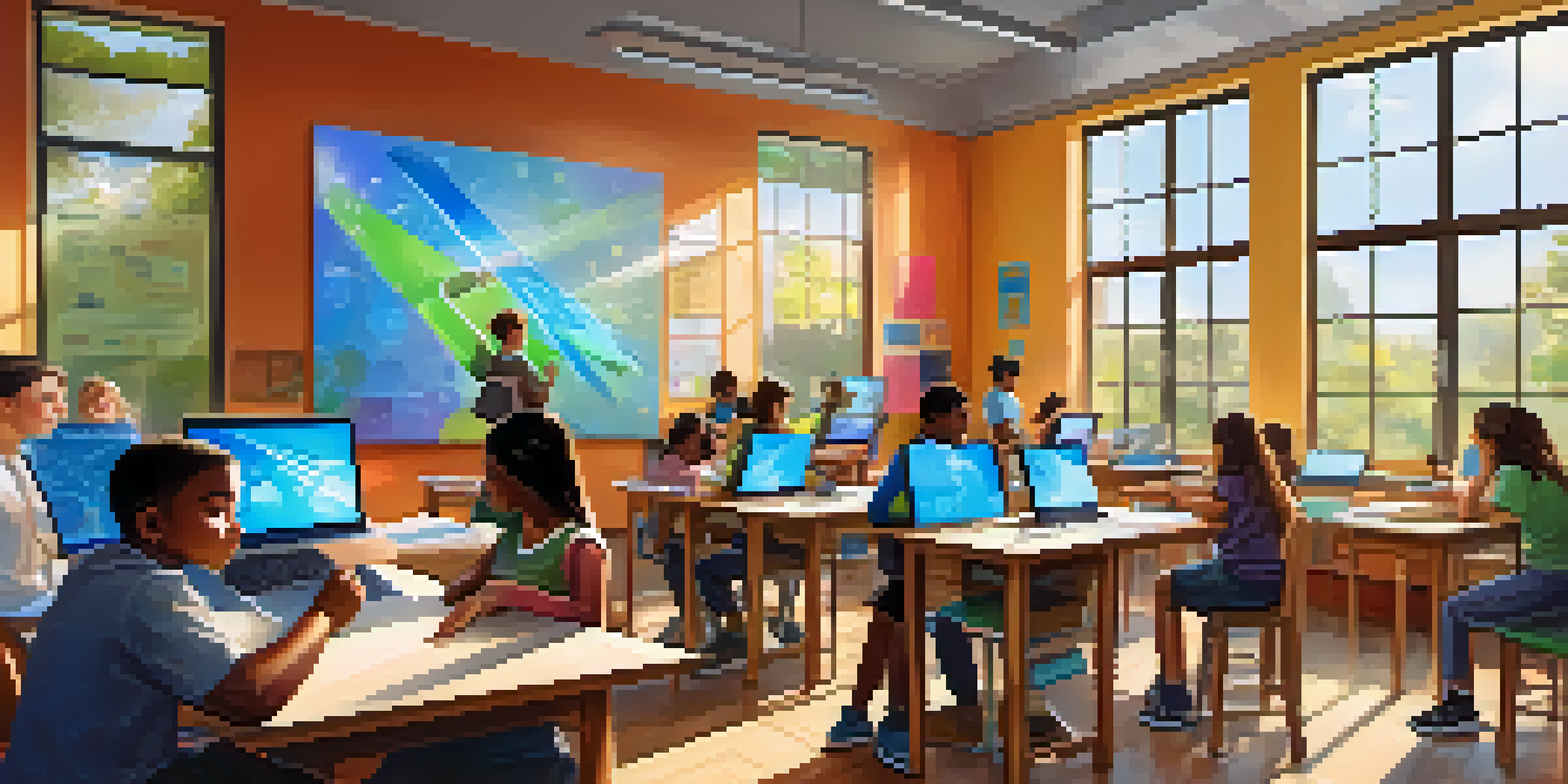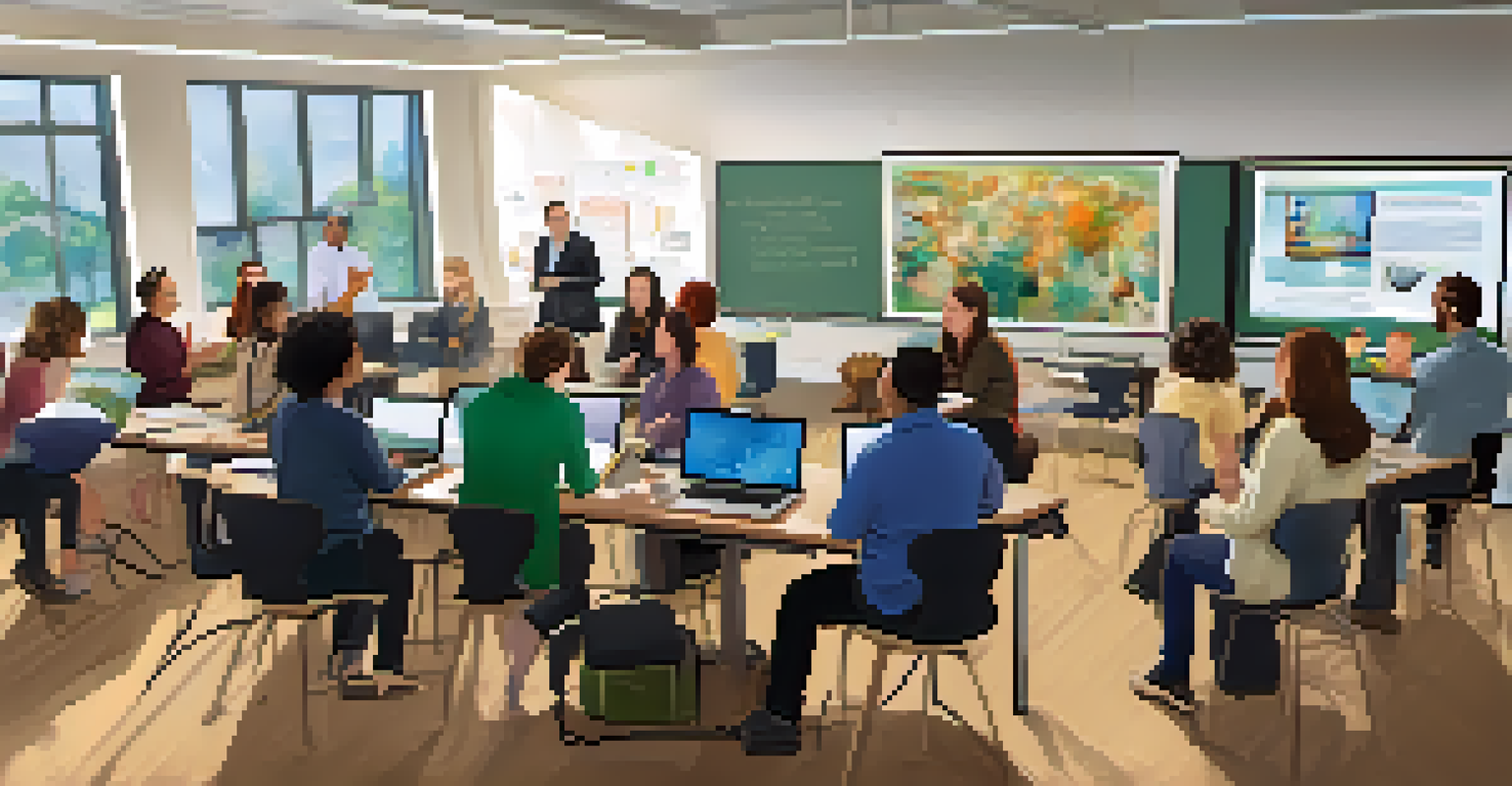Technology Integration in NYC Public Schools: Progress and Hurdles

The Current State of Technology in NYC Schools
In recent years, NYC public schools have made significant strides in integrating technology into the classroom. With a focus on enhancing learning experiences, schools have adopted various digital tools, from tablets to interactive whiteboards. This shift aims to prepare students for a tech-driven world, making education more engaging and relevant.
Education is the most powerful weapon which you can use to change the world.
However, the integration of technology is not uniform across all schools. While some institutions have access to the latest gadgets, others struggle with outdated equipment and limited internet connectivity. This disparity raises concerns about equity and access, as students in less resourced areas may miss out on valuable learning opportunities.
Moreover, the COVID-19 pandemic accelerated the push for remote learning technologies, highlighting both the potential and the challenges of digital education. Schools had to quickly adapt, revealing gaps in training and infrastructure that need to be addressed moving forward.
Benefits of Technology in Education
One of the most notable benefits of technology integration is the ability to personalize learning. Digital tools can cater to different learning styles, allowing students to engage with material in ways that suit them best. For instance, interactive apps and educational games can make complex subjects like math and science more accessible and enjoyable.

Additionally, technology fosters collaboration among students. Online platforms enable group projects where students can share ideas and resources, regardless of their physical location. This collaborative spirit not only enhances learning but also builds vital teamwork skills that are essential in today's workforce.
Tech Integration Boosts Learning
NYC schools are increasingly adopting technology to enhance student engagement and personalize learning experiences.
Furthermore, technology can bridge the gap between educators and students. With communication tools like Google Classroom or Zoom, teachers can provide instant feedback and support, helping students stay on track. This ongoing engagement can boost motivation and accountability, leading to better educational outcomes.
Challenges Facing Technology Integration
Despite the potential benefits, numerous challenges hinder the effective integration of technology in NYC schools. One primary issue is the lack of adequate training for teachers, who may feel unprepared to incorporate new tools into their lessons. Professional development programs must evolve to address these needs and empower educators to leverage technology confidently.
Technology is best when it brings people together.
Another significant hurdle is the digital divide. Not all students have access to devices or reliable internet at home, creating disparities that can affect their learning. Schools and policymakers need to prioritize equitable access to technology to ensure all students can benefit from these advancements.
Moreover, concerns about screen time and student well-being are growing. As technology becomes a more prominent part of education, finding the right balance between digital and traditional learning methods is crucial. Schools must adopt strategies that promote healthy tech usage while maximizing its educational benefits.
The Role of Leadership in Technology Integration
Effective leadership is paramount for successful technology integration in schools. School administrators play a crucial role in setting a vision for how technology can enhance education and provide the necessary resources. Their commitment can inspire both teachers and students to embrace digital tools.
Moreover, leaders must foster a culture of innovation within their schools. Encouraging teachers to experiment with technology and share best practices can create a collaborative environment that drives successful integration. This support can also help alleviate fears or resistance to change among staff.
Challenges Hinder Equal Access
Disparities in access to technology and training present significant challenges for effective integration across all schools.
Finally, strong leadership involves engaging with the community. By involving parents, local businesses, and other stakeholders, schools can create a network of support that enhances technology initiatives. This collaborative approach can lead to more sustainable and impactful integration efforts.
The Importance of Professional Development
Professional development is essential for teachers to effectively use technology in the classroom. Ongoing training opportunities can equip educators with the skills and confidence to integrate digital tools into their teaching practices. This investment not only benefits teachers but also enhances student learning experiences.
Workshops, webinars, and peer mentoring programs can help teachers stay updated on the latest educational technologies. By fostering a culture of continuous learning, schools can ensure that educators are not only comfortable with tech but also innovative in their approaches. This adaptability is vital as technology continues to evolve.
Furthermore, professional development should be tailored to meet the diverse needs of educators. Some may require basic training, while others may seek advanced strategies for using technology creatively. By offering personalized support, schools can empower all teachers to maximize the potential of technology in their classrooms.
Engaging the Community in Technology Initiatives
Community engagement is a critical component of successful technology integration in schools. By involving parents and local organizations, schools can create a supportive network that enhances educational initiatives. This collaboration can lead to increased resources and opportunities for students.
For instance, partnerships with tech companies can provide access to cutting-edge tools and training for both teachers and students. These collaborations can also offer internships and mentorship programs that prepare students for future careers in technology. Engaging the community in this manner fosters a sense of shared responsibility for student success.
Community Involvement is Crucial
Engaging parents and local organizations strengthens technology initiatives and provides additional resources for students.
Additionally, schools can host events that showcase student projects utilizing technology. These events not only celebrate student achievements but also educate families about the importance of technology in education. By involving the community, schools can build enthusiasm and support for ongoing technology initiatives.
Looking Ahead: The Future of Technology in NYC Schools
The future of technology integration in NYC public schools holds immense potential. As advancements in educational technology continue to emerge, schools have the opportunity to transform the learning experience further. Innovations such as virtual reality and artificial intelligence could revolutionize how students engage with content.
However, realizing this potential requires a commitment from all stakeholders—schools, educators, families, and policymakers. Collaborative efforts must focus on addressing existing challenges while embracing new opportunities. Only then can we ensure that all students have access to the benefits of technology-enhanced education.

Ultimately, the goal is to create a dynamic learning environment where technology and traditional teaching methods coexist. By fostering a culture of innovation and inclusivity, NYC public schools can pave the way for a brighter, more equitable educational future for all students.